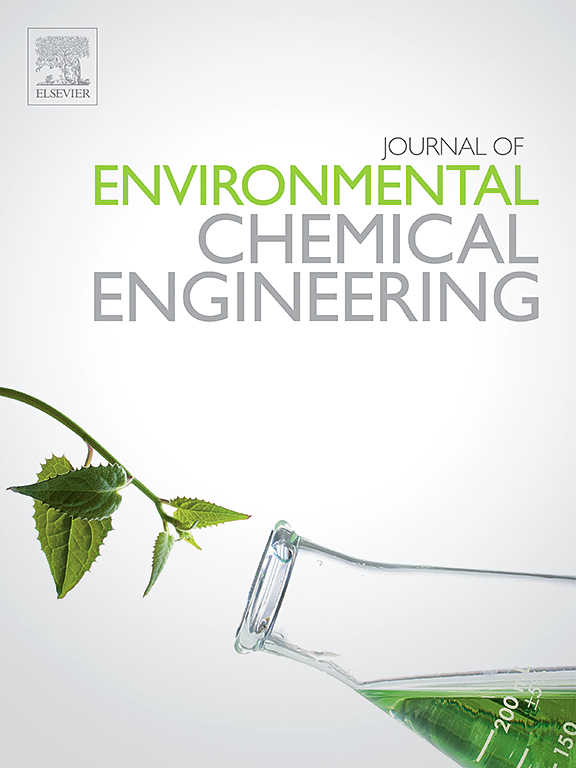消除威胁:全面审查化学战剂去污战略
IF 7.4
2区 工程技术
Q1 ENGINEERING, CHEMICAL
引用次数: 0
摘要
化学战剂 (CWA) 是一种重大威胁,因此有必要制定有效的去污策略。本文综述了各种去污方法,分析了它们在对付包括膀胱剂在内的化学战剂时各自的优缺点:硫芥子气(双(2-氯乙基)硫化物,HD;氮芥;双(2-氯乙基)乙胺(HN1)、双(2-氯乙基)甲胺(HN2)、三(2-氯乙基)胺(NH3)和路易斯特;神经毒剂沙林(甲基膦酰氟异丙酯,GB)、索曼(甲基膦酰氟嚬哪醇酯,GD)、塔崩(N,N'-二甲基磷酰胺氰酸乙酯,GA)和 VX(N-2-二异丙基甲基膦硫酸氨基乙酯);呕吐剂克拉克 I(二苯基氯胂,DA)。传统的去污方法包括利用水分解 CWA 的水解法和基于氯的去污法,前者以其有效性而著称,尽管存在环境方面的缺点。高级氧化工艺(AOPs)可利用高活性自由基高效销毁 CWA,但实施起来可能比较复杂。金属有机框架(MOFs)等新兴材料具有高表面积和可调结构,因此有可能在化学战剂净化领域掀起一场革命。此外,人们还在研究聚氧化金属(POMs)、沸石和活性聚合物在降解化学战剂过程中的催化和吸附特性。本综述强调了继续研究开发高效、安全和环境友好型去污方法的必要性。结合现有方法和定制新型材料(如 MOFs 和活性聚合物)的潜力为 CWA 去污的重大进展铺平了道路。本文章由计算机程序翻译,如有差异,请以英文原文为准。
Neutralizing the threat: A comprehensive review of chemical warfare agent decontamination strategies
Chemical warfare agents (CWAs) represent a significant threat, necessitating the development of effective decontamination strategies. This article reviews various decontamination methods, analysing their respective strengths and weaknesses against chemical warfare agents including vesicants: sulfur mustard (bis(2-chloroethyl) sulfide, HD; nitrogen mustards; bis(2-chloroethyl)ethylamine (HN1), bis (2-chloroethyl)methylamine (HN2), tris(2-chloroethyl)amine (NH3) and Lewisite; nerve agents sarin (isopropyl methylphosphonofluoridate, GB), soman (pinacolyl methylphosphonofluoridate, GD), tabun (Ethyl N,N’-dimethylphosphoroamidocyanidate, GA) and VX, (ethyl N-2-diisopropyl aminoethyl methylphosphonothiolate); vomiting agent Clark I (diphenylchloroarsine, DA). Traditional decontamination approaches include hydrolysis, which utilises water for CWA breakdown, and chlorine-based decontamination, known for its effectiveness despite environmental drawbacks. Advanced oxidation processes (AOPs) offer efficient CWA destruction using highly reactive radicals but can be complex to implement. Emerging materials such as metal-organic frameworks (MOFs) have the potential to revolutionise the field of chemical warfare agent decontamination due to their high surface area and tunable structures. Additionally, polyoxometalates (POMs), zeolites, and reactive polymers are being investigated for their catalytic and adsorptive properties in CWA degradation. This review highlights the necessity for continuous research to develop efficient, safe, and environmentally friendly decontamination methods. The potential of combining existing approaches and tailoring novel materials, such as MOFs and reactive polymers, paves the way for significant advancements in CWA decontamination.
求助全文
通过发布文献求助,成功后即可免费获取论文全文。
去求助
来源期刊

Journal of Environmental Chemical Engineering
Environmental Science-Pollution
CiteScore
11.40
自引率
6.50%
发文量
2017
审稿时长
27 days
期刊介绍:
The Journal of Environmental Chemical Engineering (JECE) serves as a platform for the dissemination of original and innovative research focusing on the advancement of environmentally-friendly, sustainable technologies. JECE emphasizes the transition towards a carbon-neutral circular economy and a self-sufficient bio-based economy. Topics covered include soil, water, wastewater, and air decontamination; pollution monitoring, prevention, and control; advanced analytics, sensors, impact and risk assessment methodologies in environmental chemical engineering; resource recovery (water, nutrients, materials, energy); industrial ecology; valorization of waste streams; waste management (including e-waste); climate-water-energy-food nexus; novel materials for environmental, chemical, and energy applications; sustainability and environmental safety; water digitalization, water data science, and machine learning; process integration and intensification; recent developments in green chemistry for synthesis, catalysis, and energy; and original research on contaminants of emerging concern, persistent chemicals, and priority substances, including microplastics, nanoplastics, nanomaterials, micropollutants, antimicrobial resistance genes, and emerging pathogens (viruses, bacteria, parasites) of environmental significance.
 求助内容:
求助内容: 应助结果提醒方式:
应助结果提醒方式:


